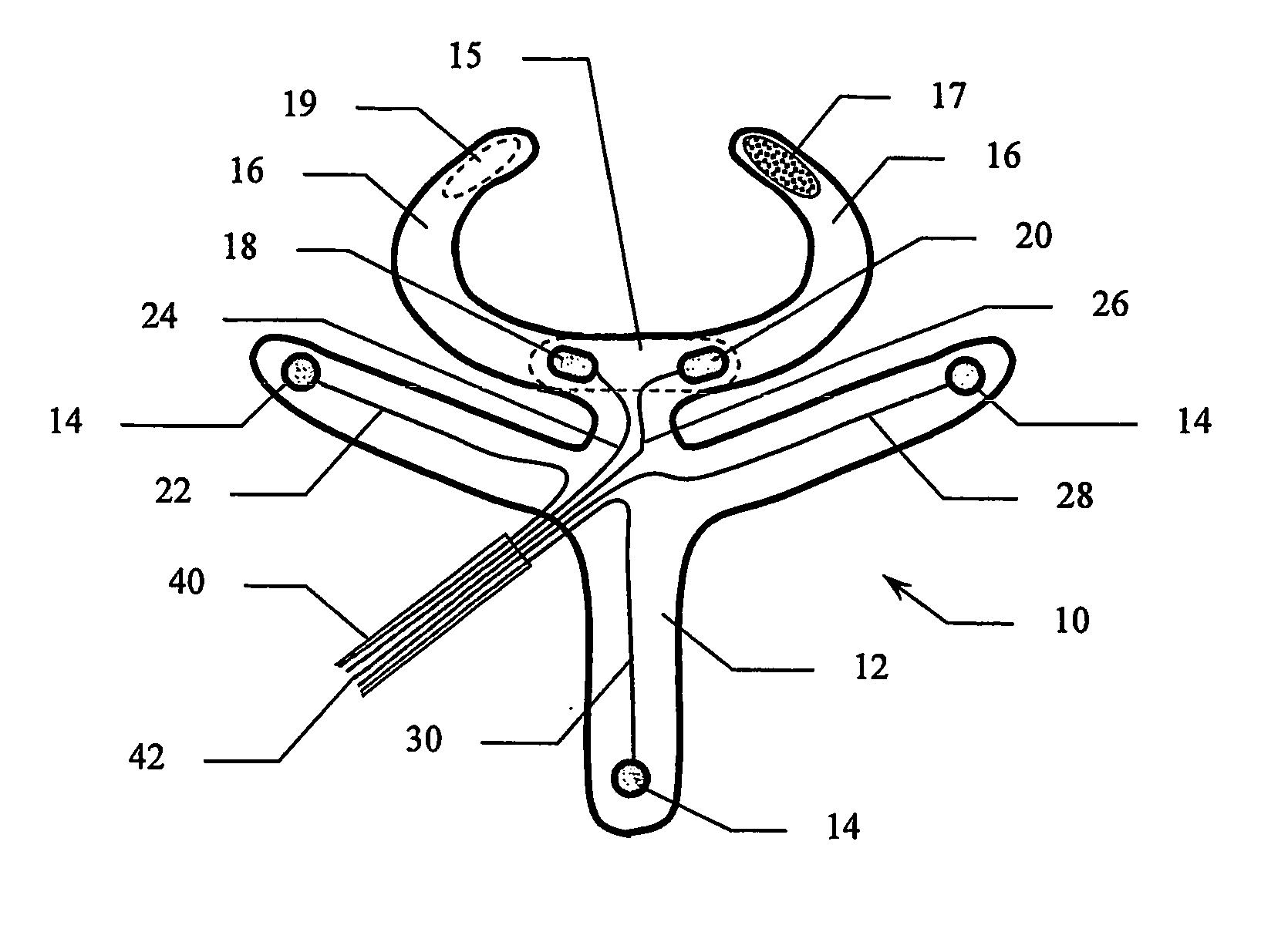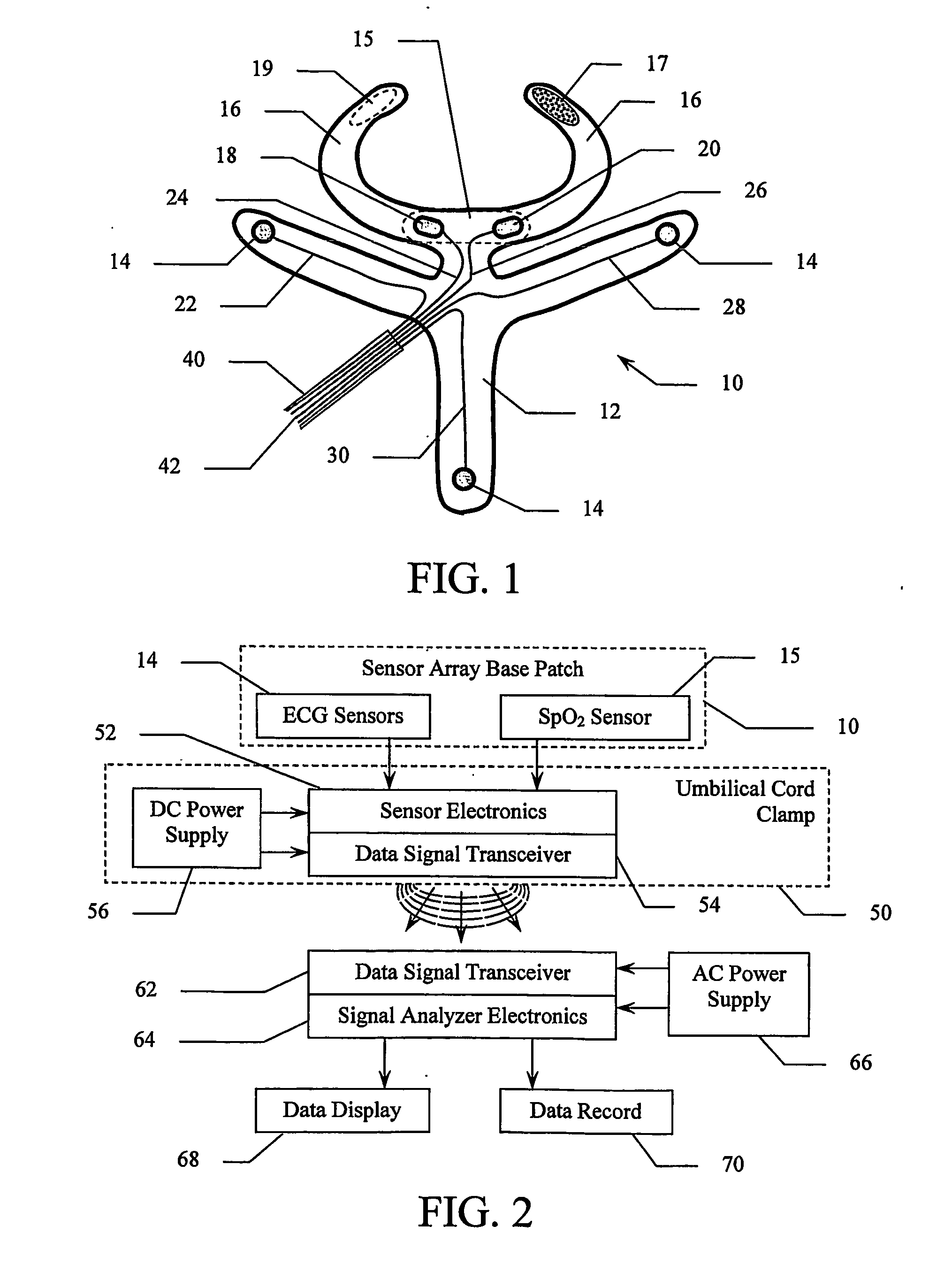Periumbilical Infant Ecg Sensor and Monitoring System
a technology of ecg sensor and monitoring system, which is applied in the field of ecg and blood oxygenation sensor of periumbilical infants, can solve the problems of less than desired, less than often acquired from multi-lead ecg patients, and less than desired, so as to reduce labor and time, reduce the total cost of materials and equipment, and eliminate the need for individual lead wires
- Summary
- Abstract
- Description
- Claims
- Application Information
AI Technical Summary
Benefits of technology
Problems solved by technology
Method used
Image
Examples
Embodiment Construction
[0043] Reference is made first to FIG. 1 for a description of the periumbilical sensor component of the present invention. Periumbilical sensor array 10 in accordance with the present invention preferably comprises a base 12 having three ECG electrodes 14, a hemoglobin oxygen saturation (SpO2) sensor 15 (comprising a light source 20 and a photo detector 18) and a pair of arms 16 (comprising hook and loop fasteners 17 and 19). ECG electrodes 14 are connected to ribbon cable 40 by way of wires 22, 28, and 30 and are positioned on the distal ends of three radiating extensions of base 12.
[0044] Light source 20 and photo detector 18 of SpO2 sensor 15 are connected to ribbon cable 40 by way of wires 24 and 26. In one preferred embodiment, light source 20 would comprise a visible light LED (light emitting diode) and an infrared LED as is known in the art of pulse oximetry. In such an embodiment, wire 26 may actually comprise two or more wires to provide the necessary electrical connection...
PUM
 Login to View More
Login to View More Abstract
Description
Claims
Application Information
 Login to View More
Login to View More - R&D
- Intellectual Property
- Life Sciences
- Materials
- Tech Scout
- Unparalleled Data Quality
- Higher Quality Content
- 60% Fewer Hallucinations
Browse by: Latest US Patents, China's latest patents, Technical Efficacy Thesaurus, Application Domain, Technology Topic, Popular Technical Reports.
© 2025 PatSnap. All rights reserved.Legal|Privacy policy|Modern Slavery Act Transparency Statement|Sitemap|About US| Contact US: help@patsnap.com



